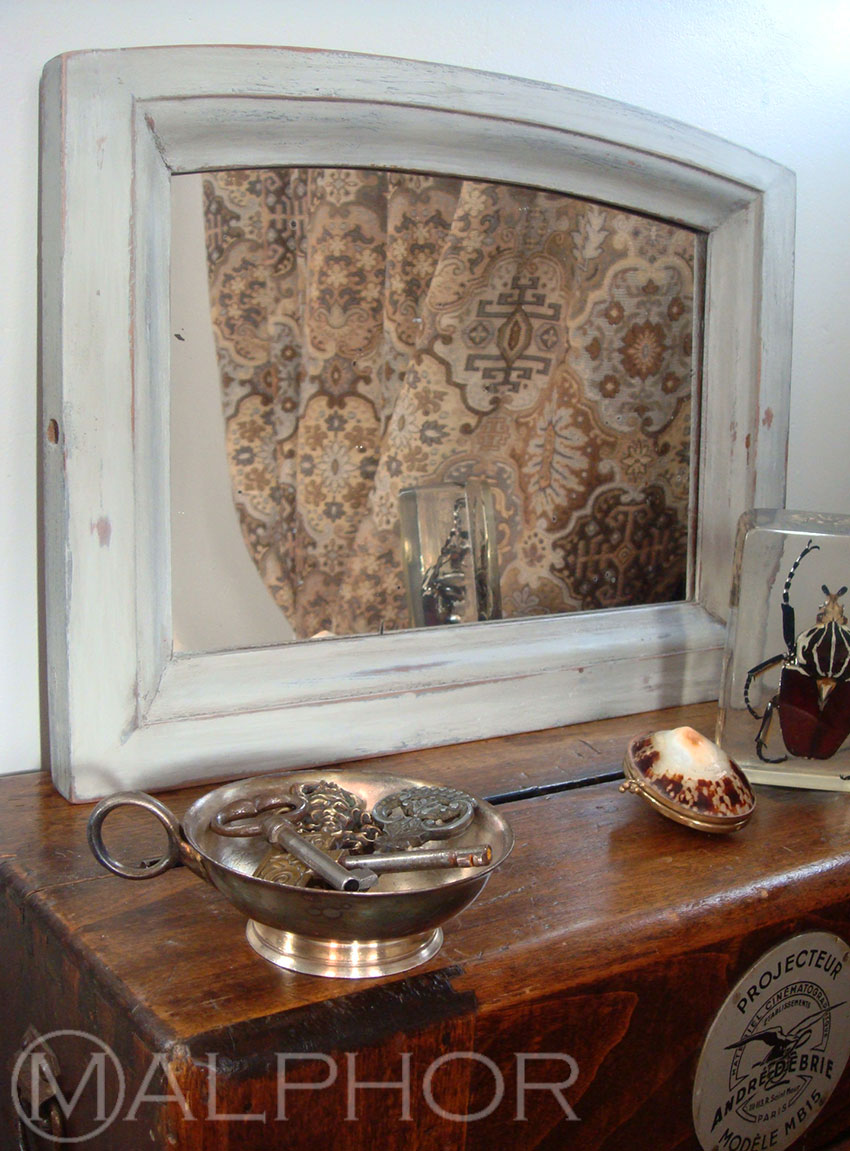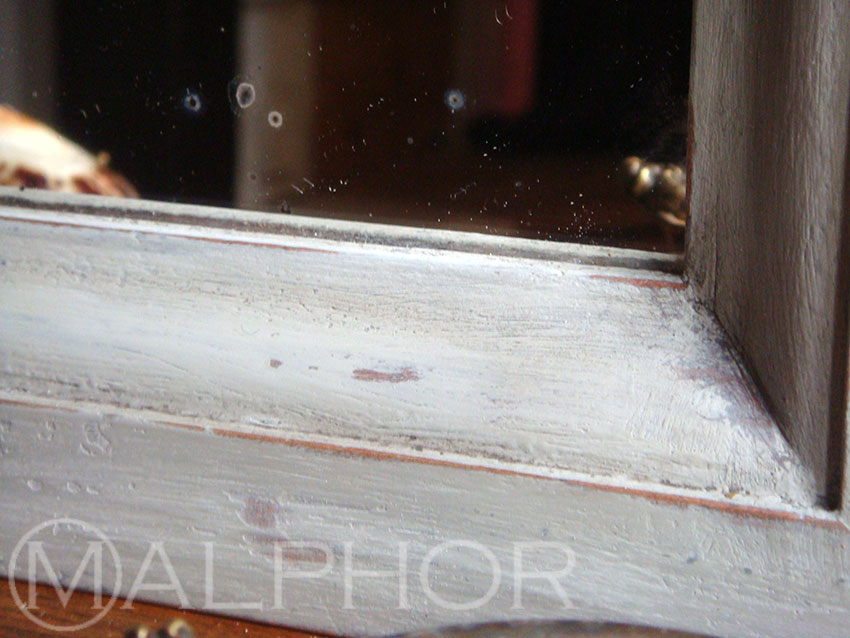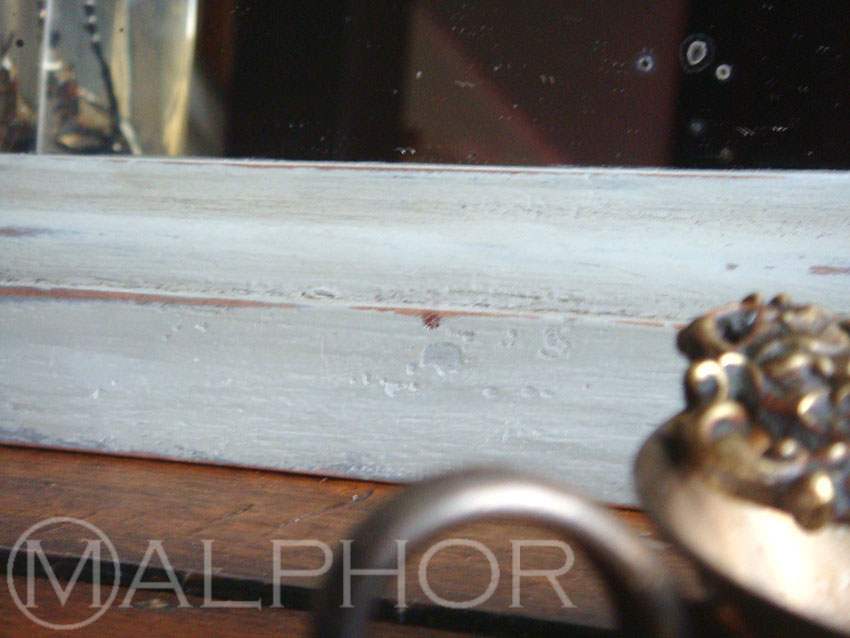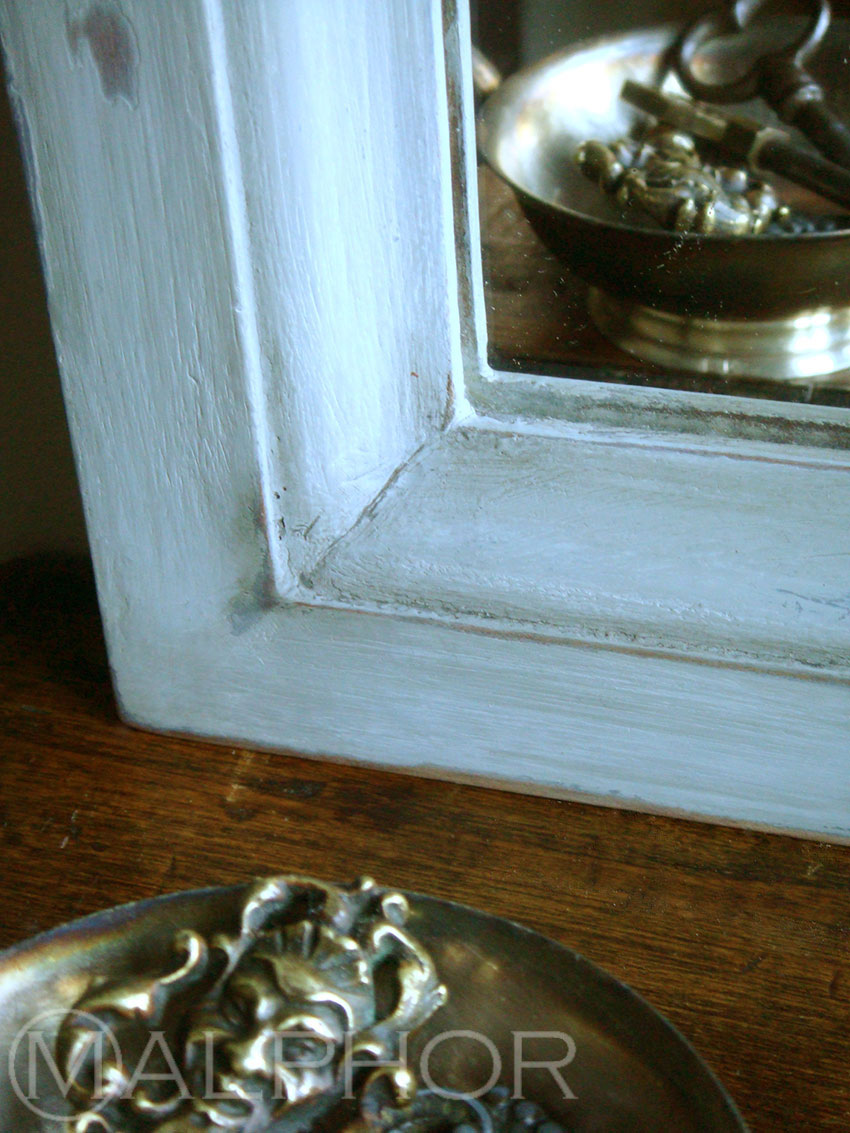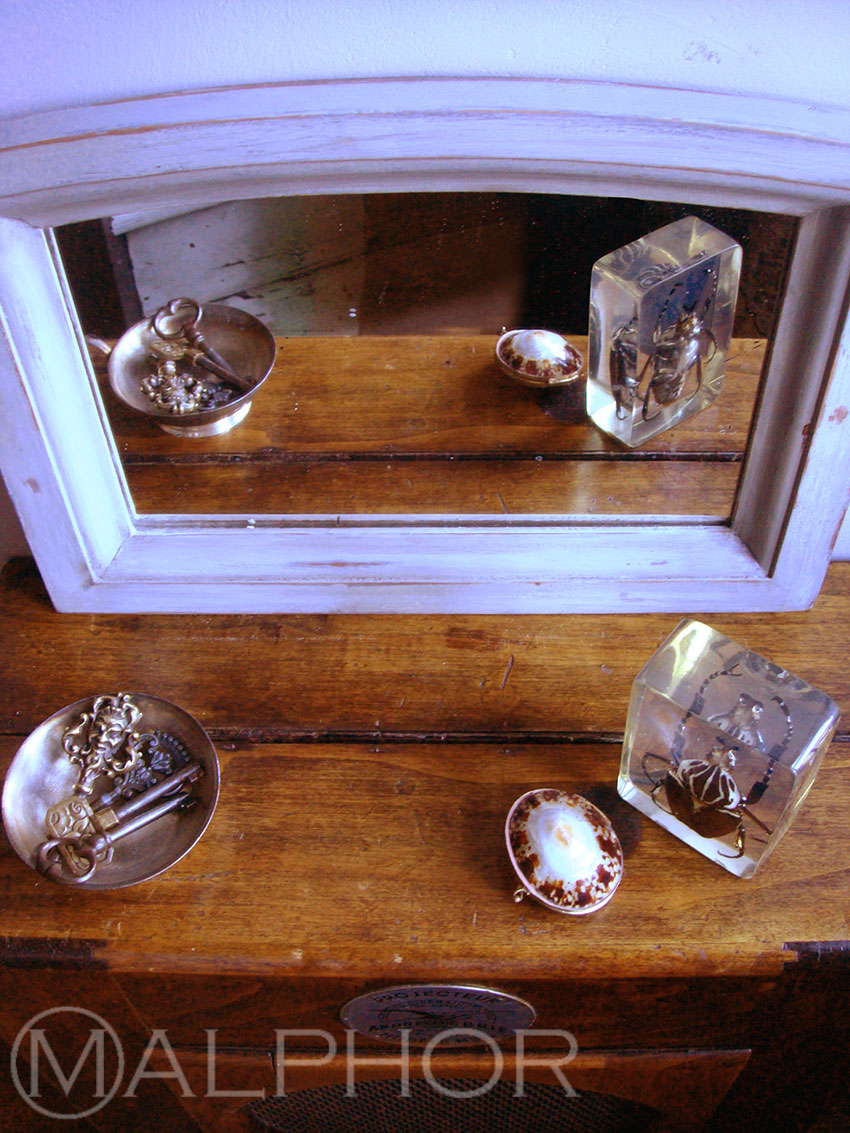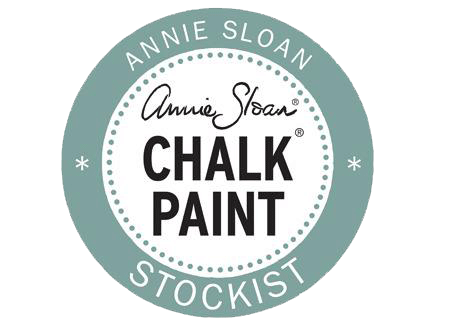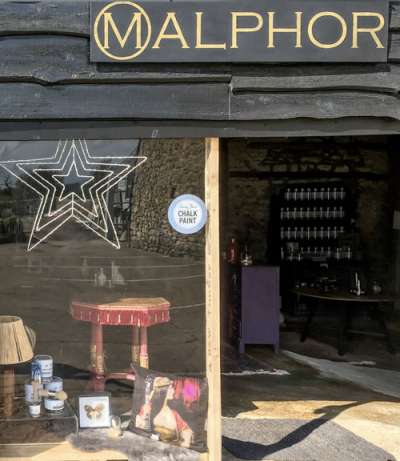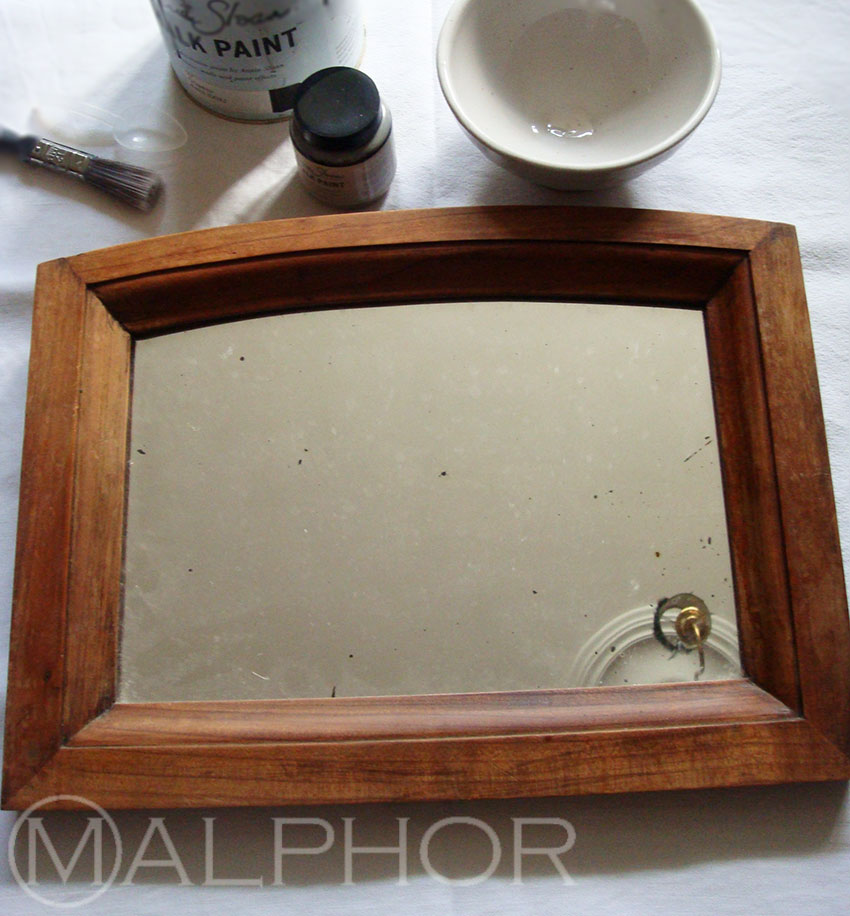
I wasn't going to paint it at first. The wood is rather lovely and the mirror would have turned out well with just a clean and a coat of wax. But my heart tells me to paint it, and I have learnt not to argue with it, it works much better for me than listening to my head! So here I go for a grey vintage look. I want to paint on a darker shade of grey as a first coat, so I mix some ASCP (Annie Sloan Chalk Paint) Graphite with my top coat colour to darken it a bit. I use about a teaspoon of ASCP Paris Grey to which I add a quarter spoon of Graphite. I don't need a lot as the mirror is quite small and only need one coat of this. A good stir and I'm ready to go.
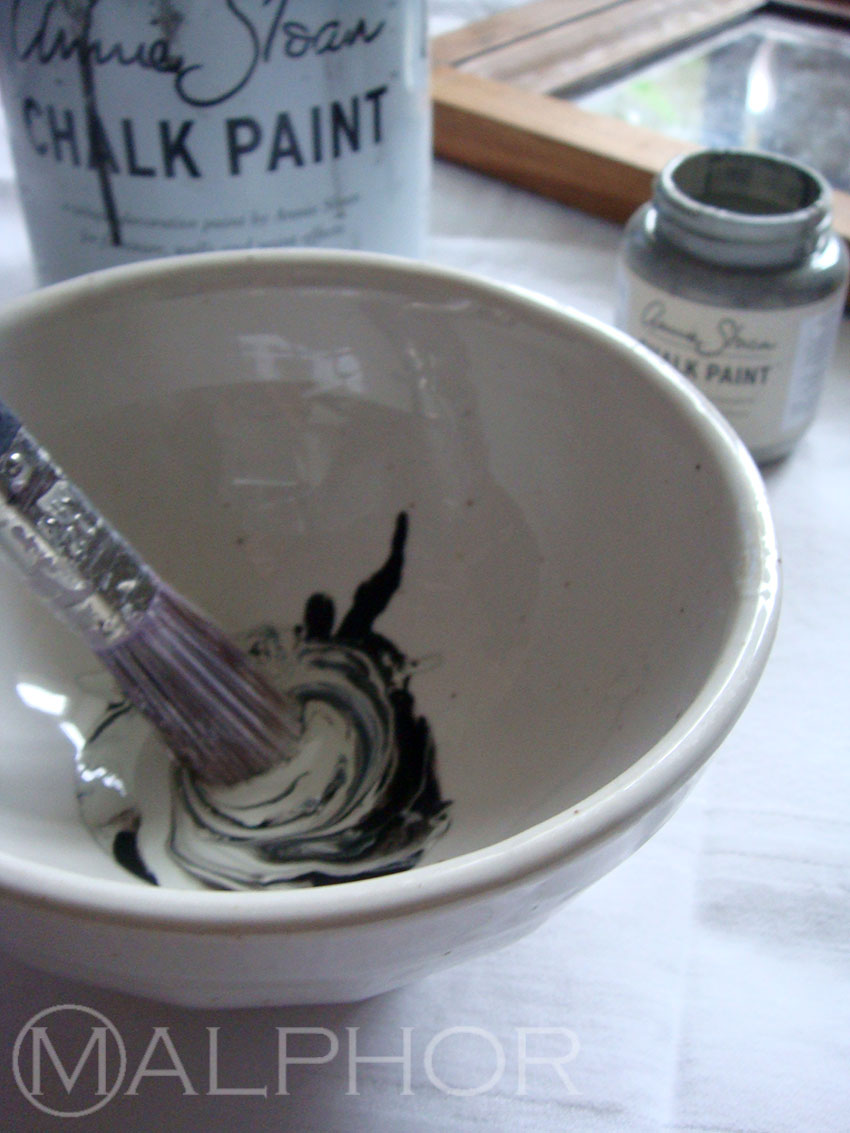
But, of course, I must protect the mirror before I apply the paint if I don't want to be scraping the glass later on! And I know that these little inserts one finds inside new shirts' packaging would come handy one day. Any thin cardboard or card will do. Just slide them between the frame and the glass, et voila! Mirror protected with minimum fuss.
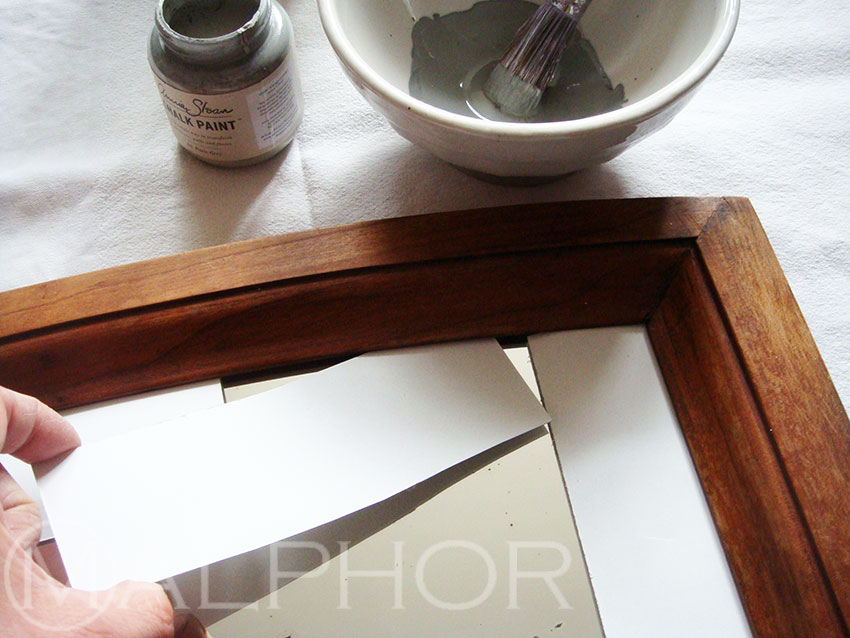
I can safely apply my first coat of the darker shade of grey, roughly. Just slap it on. It doesn't matter how well you go here, it will get covered up with another coat and get distressed anyway.
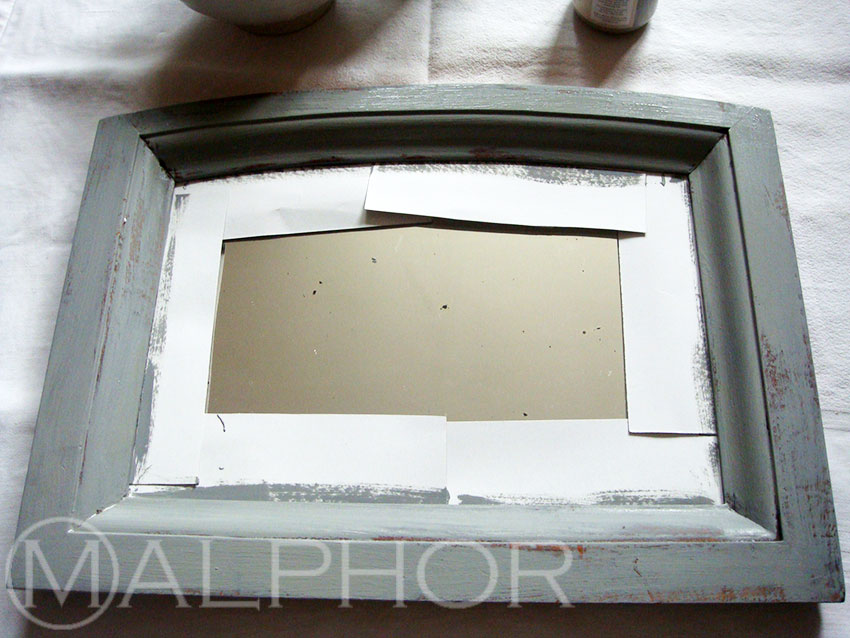
A few moments later, I can apply the lighter shade.
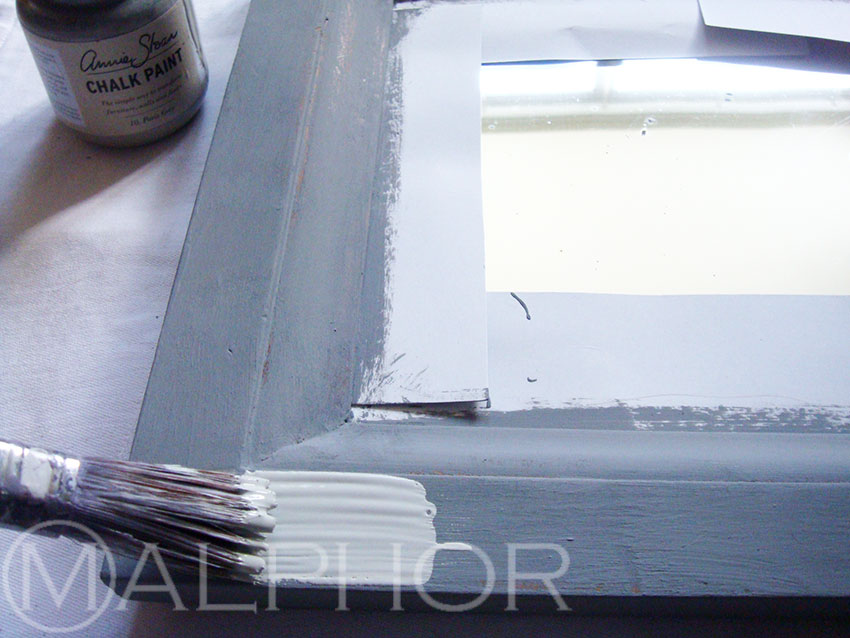
Now it's time to get creative with the distressing! Before the second coat dries, I give it a blast of hot air here and there to get some unevenness in the paint texture (use a hair dryer or heat gun). Once dry, I give the whole thing a good going over with a wet and dry sanding sponge (used dry). It slowly reveals the darker shade of grey the lies beneath, allows you to monitor how things are going slowly but surely, and it gives the whole surface a smooth soft feel to the touch. I use a coarser sandpaper sheet to reveal more of the bare wood in places.
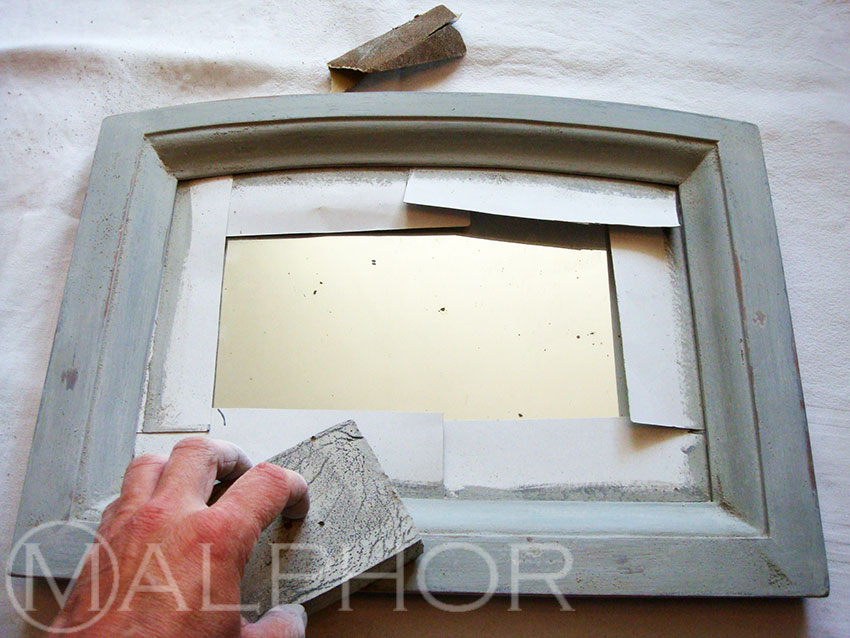
After brushing the dust off, I can apply my glaze. I make up my own ageing glaze using pigment, turpentine and linseed oil, but you could buy a glazing medium in an art supplies shop and add pigment to this, or simply use a little latex paint that you would thin down by 50% with water. Basically, you need something the colour of dirt, reddish-brownish-blackish, watery and with a transparency. I use a spoon tip each of black, raw umber and burnt umber pigments to 2 spoons of turpentine + 1 of linseed oil. This mixture can be applied with an artist brush with more precision than a dark wax would, and it's also less dirty, more elegant in a way (if dirt can be elegant!). I brush it anywhere natural dirt would have occurred like the corners and mouldings. I use an old brush to apply a bit of the mixture all over as well (the loose, sparse hair applies the glaze slightly randomly).
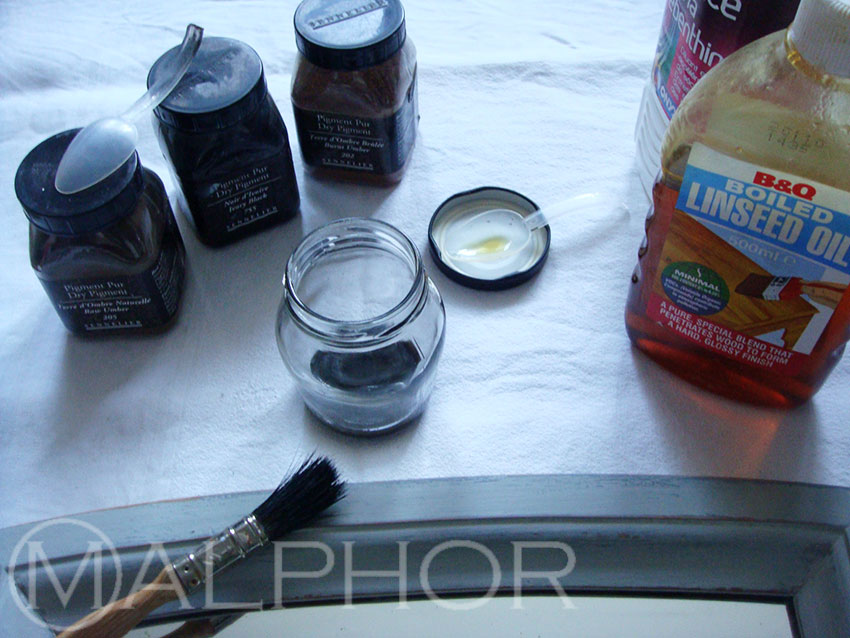
Once the glaze is thoroughly dry - I'll leave it for a few days - I shall rub on some clear wax to seal the piece. There is nothing like a bit of creative magic, as I definitely see things on the bright side now!
